Commercial & Industrial

Commercial and Industrial
Building Heating and Cooling
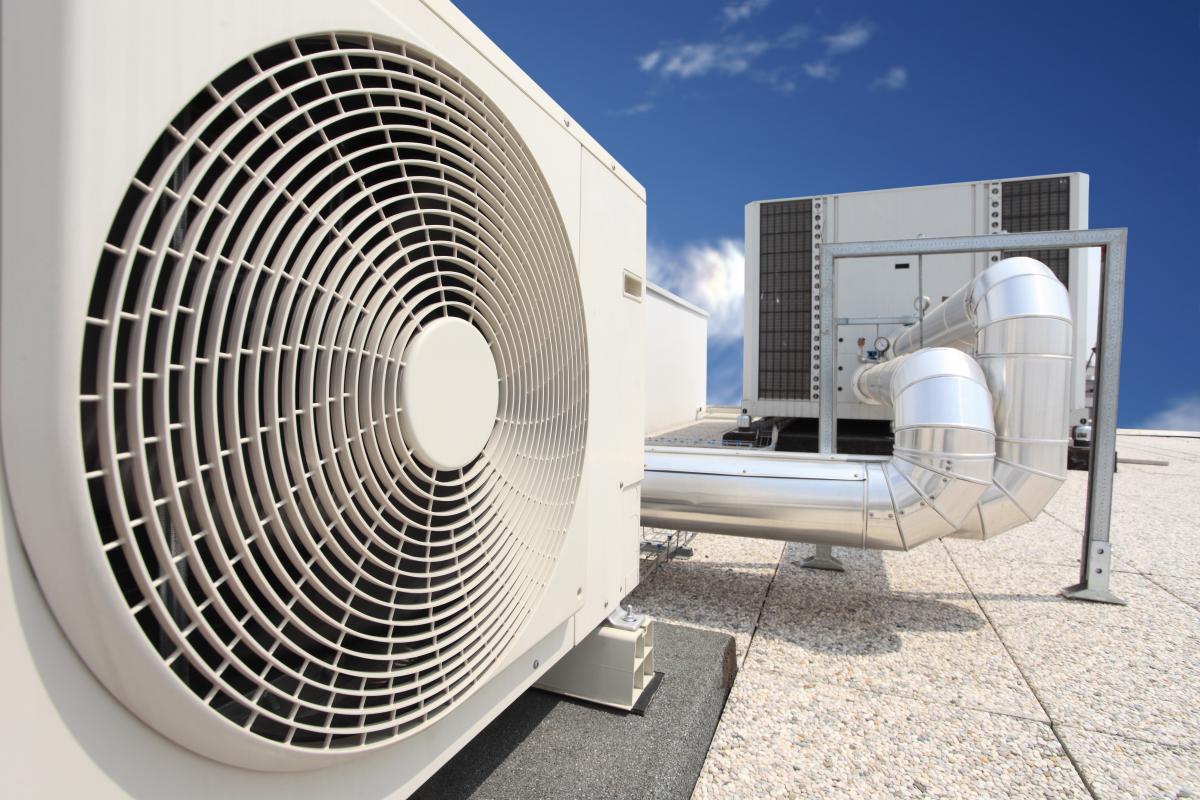 Commercial air conditioners and heat pumps are air-cooled, water-cooled, evaporatively cooled, or water source unitary equipment that is used for space conditioning of commercial and industrial buildings.
Commercial air conditioners and heat pumps are air-cooled, water-cooled, evaporatively cooled, or water source unitary equipment that is used for space conditioning of commercial and industrial buildings.
For more information, see the DOE’s Appliance and Equipment Standards for this product.
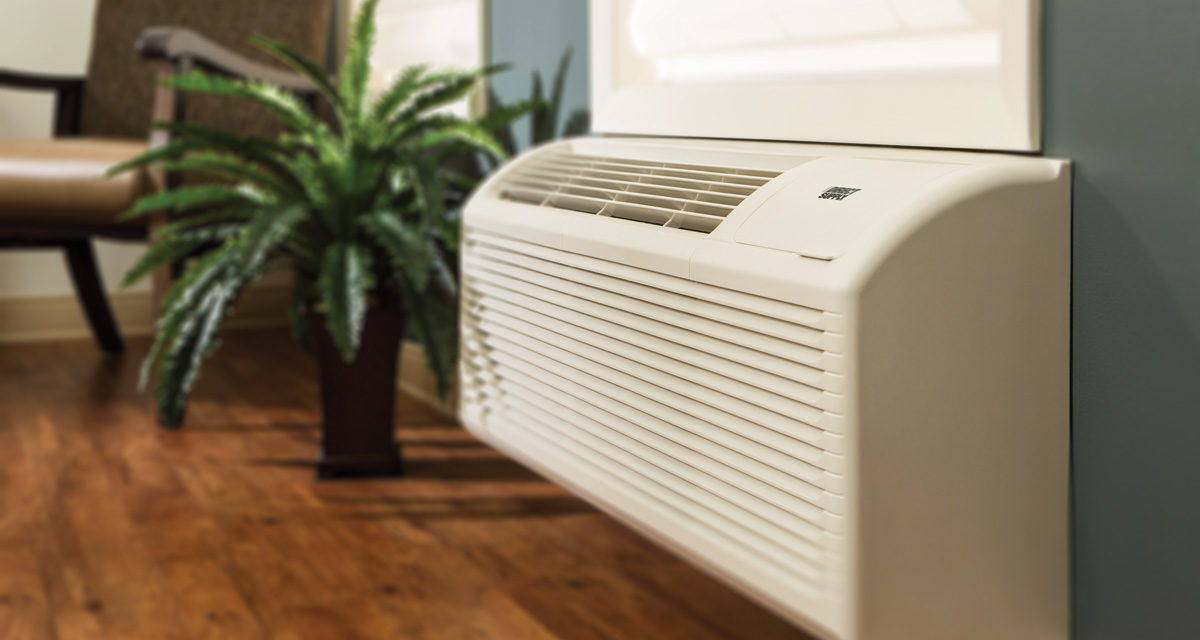 Packaged terminal air conditioners (PTACs) and packaged terminal heat pumps (PTHPs) are through-the-wall space conditioning units commonly used in lodging, townhouse office complexes, and extended care facilities.
Packaged terminal air conditioners (PTACs) and packaged terminal heat pumps (PTHPs) are through-the-wall space conditioning units commonly used in lodging, townhouse office complexes, and extended care facilities.
For more information, see the DOE’s Appliance and Equipment Standards for this product.
 As defined in the Code of Federal Regulations (CFR), “commercial packaged boiler” means a type of packaged low pressure boiler that is industrial equipment with a capacity, (rated maximum input) of 300,000 Btu per hour (Btu/hr) or more which, to any significant extent, is distributed in commerce: (1) For heating or space conditioning applications in buildings; or (2) For service water heating in buildings but does not meet the definition of “hot water supply boiler” (as defined in 10 CFR 431).
As defined in the Code of Federal Regulations (CFR), “commercial packaged boiler” means a type of packaged low pressure boiler that is industrial equipment with a capacity, (rated maximum input) of 300,000 Btu per hour (Btu/hr) or more which, to any significant extent, is distributed in commerce: (1) For heating or space conditioning applications in buildings; or (2) For service water heating in buildings but does not meet the definition of “hot water supply boiler” (as defined in 10 CFR 431).
For more information, see the DOE’s Appliance and Equipment Standards for this product.
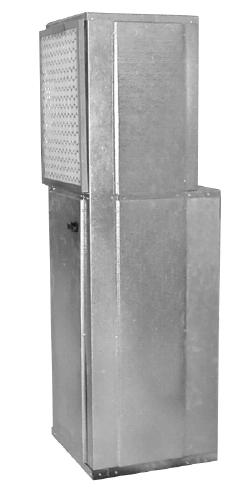 Single package vertical air conditioners and heat pumps are commercial air conditioning and heating equipment with its main components arranged in a vertical fashion. They are mainly used in modular classrooms, modular office buildings, telecom shelters, and hotels, and are typically installed on the outside of an exterior wall or in a closet against an exterior wall but inside the building.
Single package vertical air conditioners and heat pumps are commercial air conditioning and heating equipment with its main components arranged in a vertical fashion. They are mainly used in modular classrooms, modular office buildings, telecom shelters, and hotels, and are typically installed on the outside of an exterior wall or in a closet against an exterior wall but inside the building.
For more information, see the DOE’s Appliance and Equipment Standards for this product.
Industrial Equipment
 Compression of a gas, such as air or natural gas, is a thermodynamic process whereby the gas enters a compressor machine or apparatus at one condition of pressure, volume, and temperature and exits at a condition of increased pressure and temperature with corresponding decreased volume. Compressed air can be converted into useful work to power a wide variety of commercial and industrial equipment which use large volumes of air, such as pneumatic manufacturing tools in an automated factory that assembles car parts, or bulk packaging of consumer products. Natural gas compressors can be used for gathering, transmission, and distribution of natural gas.
Compression of a gas, such as air or natural gas, is a thermodynamic process whereby the gas enters a compressor machine or apparatus at one condition of pressure, volume, and temperature and exits at a condition of increased pressure and temperature with corresponding decreased volume. Compressed air can be converted into useful work to power a wide variety of commercial and industrial equipment which use large volumes of air, such as pneumatic manufacturing tools in an automated factory that assembles car parts, or bulk packaging of consumer products. Natural gas compressors can be used for gathering, transmission, and distribution of natural gas.
For more information, see the DOE’s Appliance and Equipment Standards for this product.
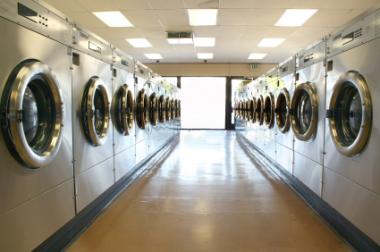 Commercial clothes washer means a soft-mounted front-loading or soft-mounted top-loading clothes washer that: (1) Has a clothes container compartment that (i) For horizontal-axis clothes washers, is not more than 3.5 cubic feet; and (ii) For vertical-axis clothes washers, is not more than 4.0 cubic feet; and (2) Is designed for use in: (i) Applications in which the occupants of more than one household will be using the clothes washer, such as multi-family housing common areas and coin laundries; or (ii) Other commercial applications.
Commercial clothes washer means a soft-mounted front-loading or soft-mounted top-loading clothes washer that: (1) Has a clothes container compartment that (i) For horizontal-axis clothes washers, is not more than 3.5 cubic feet; and (ii) For vertical-axis clothes washers, is not more than 4.0 cubic feet; and (2) Is designed for use in: (i) Applications in which the occupants of more than one household will be using the clothes washer, such as multi-family housing common areas and coin laundries; or (ii) Other commercial applications.
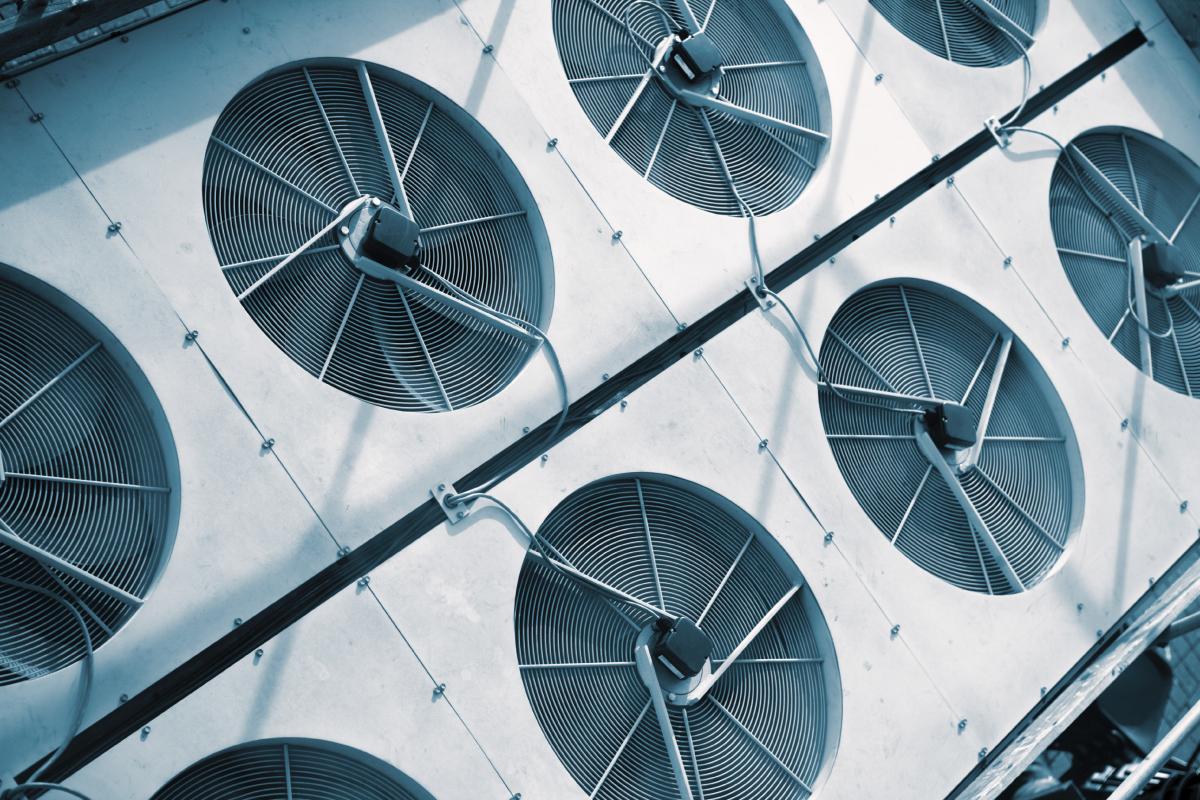 Commercial and industrial fans and blowers include a range of rotary-bladed air movement machines.
Commercial and industrial fans and blowers include a range of rotary-bladed air movement machines.
 A pump means equipment designed to move liquids (which may include entrained gases, free solids, and totally dissolved solids) by physical or mechanical action and includes a bare pump and if included by the manufacturer at the time of sale, mechanical equipment, driver and controls.
A pump means equipment designed to move liquids (which may include entrained gases, free solids, and totally dissolved solids) by physical or mechanical action and includes a bare pump and if included by the manufacturer at the time of sale, mechanical equipment, driver and controls.
 Commercial refrigerator, freezer, and refrigerator-freezer (collectively referred to as “commercial refrigeration equipment) means refrigeration equipment that is not a consumer product (as defined in §430.2 of part 430); Is not designed and marketed exclusively for medical, scientific, or research purposes; operates at a chilled, frozen, combination chilled and frozen, or variable temperature; displays or stores merchandise and other perishable materials horizontally, semi-vertically, or vertically; has transparent or solid doors, sliding or hinged doors, a combination of hinged, sliding, transparent, or solid doors, or no doors; is designed for pull-down temperature applications or holding temperature applications; and is connected to a self-contained condensing unit or to a remote condensing unit.
Commercial refrigerator, freezer, and refrigerator-freezer (collectively referred to as “commercial refrigeration equipment) means refrigeration equipment that is not a consumer product (as defined in §430.2 of part 430); Is not designed and marketed exclusively for medical, scientific, or research purposes; operates at a chilled, frozen, combination chilled and frozen, or variable temperature; displays or stores merchandise and other perishable materials horizontally, semi-vertically, or vertically; has transparent or solid doors, sliding or hinged doors, a combination of hinged, sliding, transparent, or solid doors, or no doors; is designed for pull-down temperature applications or holding temperature applications; and is connected to a self-contained condensing unit or to a remote condensing unit.
For more information, see the DOE’s Appliance and Equipment Standards for this product.
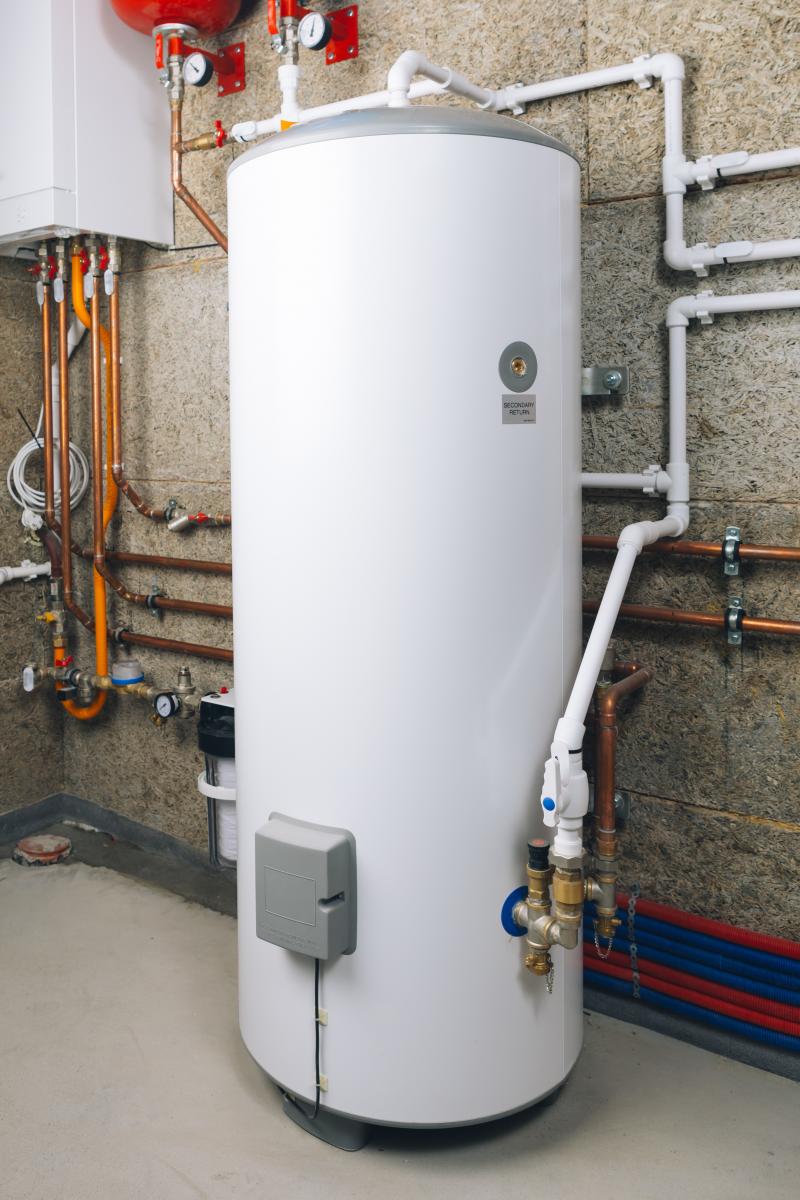 Commercial water heating equipment includes commercial storage water heaters, commercial instantaneous water heaters, and hot water supply boilers, and unfired hot water storage tanks. Commercial water heating equipment includes gas-fired, oil-fired, and electric industrial equipment. As defined in the Code of Federal Regulations (CFR), storage water heaters heat and store water within the appliance at a thermostatically controlled temperature for delivery on demand, and have an input rating less than 4,000 Btu/h per gallon of stored water. Instantaneous water heaters have an input rating not less than 4,000 Btu/h per gallon of stored water. Hot water supply boilers are packaged boilers that heat potable water for purposes other than space heating. Unfired hot water storage tanks store water that is heated externally.
Commercial water heating equipment includes commercial storage water heaters, commercial instantaneous water heaters, and hot water supply boilers, and unfired hot water storage tanks. Commercial water heating equipment includes gas-fired, oil-fired, and electric industrial equipment. As defined in the Code of Federal Regulations (CFR), storage water heaters heat and store water within the appliance at a thermostatically controlled temperature for delivery on demand, and have an input rating less than 4,000 Btu/h per gallon of stored water. Instantaneous water heaters have an input rating not less than 4,000 Btu/h per gallon of stored water. Hot water supply boilers are packaged boilers that heat potable water for purposes other than space heating. Unfired hot water storage tanks store water that is heated externally.
 Electric motors convert electrical energy to rotating mechanical energy. When operating, the electrical energy is transferred as useful mechanical energy to some driven device such as a fan, pump, blower, compressor, or conveyor. The energy efficiency standards address that portion of electrical and mechanical energy that is consumed as losses within the motor itself.
Electric motors convert electrical energy to rotating mechanical energy. When operating, the electrical energy is transferred as useful mechanical energy to some driven device such as a fan, pump, blower, compressor, or conveyor. The energy efficiency standards address that portion of electrical and mechanical energy that is consumed as losses within the motor itself.
For more information, see the DOE’s Appliance and Equipment Standards for this product.
 Distribution transformer means a transformer that (1) has an input voltage of 34.5 kV or less; (2) has an output voltage of 600 V or less; (3) is rated for operation at a frequency of 60 Hz; and (4) has a capacity of 10 kVA to 2500 kVA for liquid-immersed units and 15 kVA to 2500 kVA for dry-type units. The term “distribution transformer” does not include a transformer that is an: autotransformer; drive (isolation) transformer; grounding transformer; machine-tool (control) transformer; nonventilated transformer; rectifier transformer; regulating transformer; sealed transformer; special-impedance transformer; testing transformer; transformer with tap range of 20 percent or more; uninterruptible power supply transformer; or welding transformer.
Distribution transformer means a transformer that (1) has an input voltage of 34.5 kV or less; (2) has an output voltage of 600 V or less; (3) is rated for operation at a frequency of 60 Hz; and (4) has a capacity of 10 kVA to 2500 kVA for liquid-immersed units and 15 kVA to 2500 kVA for dry-type units. The term “distribution transformer” does not include a transformer that is an: autotransformer; drive (isolation) transformer; grounding transformer; machine-tool (control) transformer; nonventilated transformer; rectifier transformer; regulating transformer; sealed transformer; special-impedance transformer; testing transformer; transformer with tap range of 20 percent or more; uninterruptible power supply transformer; or welding transformer.
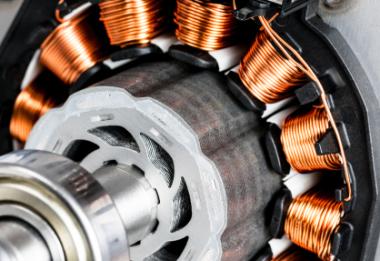 As defined in the Code of Federal Regulations (CFR), “small electric motor” are National Electrical Manufacturers Association (NEMA) general-purpose alternating current single-speed induction motors built in a two-digit frame series in accordance with NEMA Standa ds Publication MG1-1987, including International Electrotechnical Commission (IEC) metric equivalent motors.
As defined in the Code of Federal Regulations (CFR), “small electric motor” are National Electrical Manufacturers Association (NEMA) general-purpose alternating current single-speed induction motors built in a two-digit frame series in accordance with NEMA Standa ds Publication MG1-1987, including International Electrotechnical Commission (IEC) metric equivalent motors.
 Walk-in cooler and walk-in freezer (WICFs) mean an enclosed storage space refrigerated to temperatures, respectively, above, and at or below 32 degrees Fahrenheit that can be walked into, and has a total chilled storage area of less than 3,000 square feet. The terms “walk-in cooler” and “walk-in freezer” do not include products designed and marketed exclusively for medical, scientific, or research purposes.
Walk-in cooler and walk-in freezer (WICFs) mean an enclosed storage space refrigerated to temperatures, respectively, above, and at or below 32 degrees Fahrenheit that can be walked into, and has a total chilled storage area of less than 3,000 square feet. The terms “walk-in cooler” and “walk-in freezer” do not include products designed and marketed exclusively for medical, scientific, or research purposes.